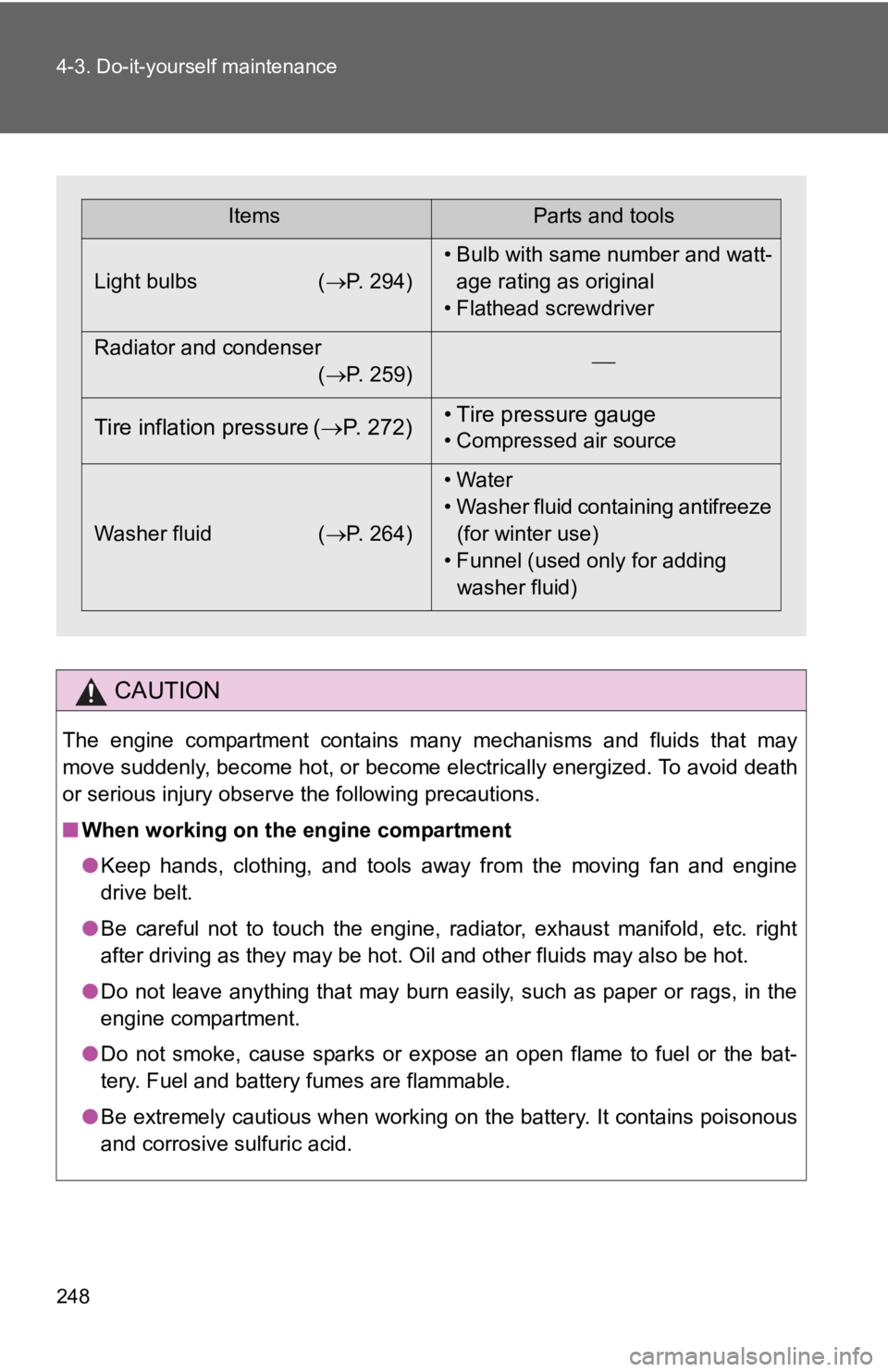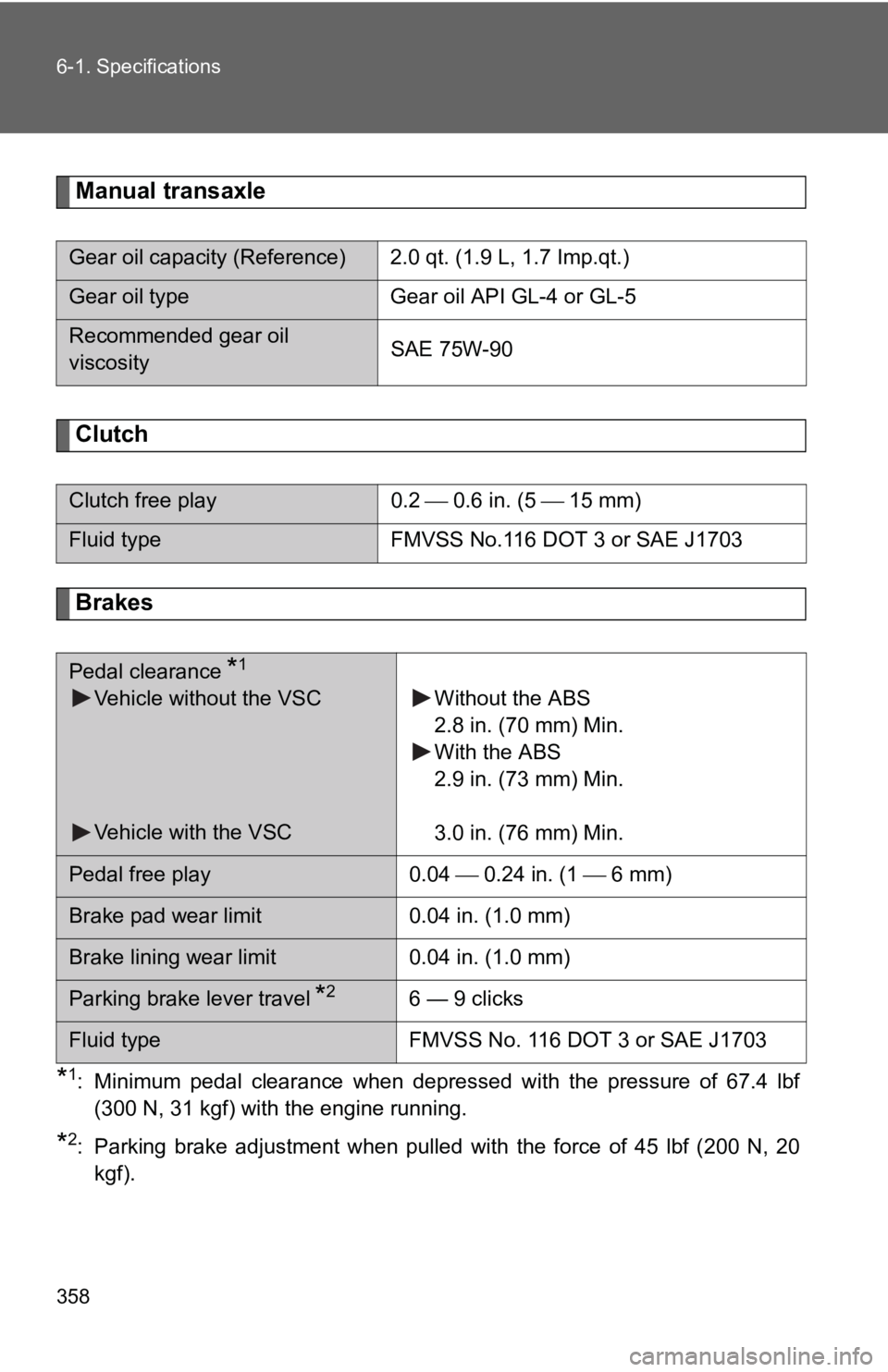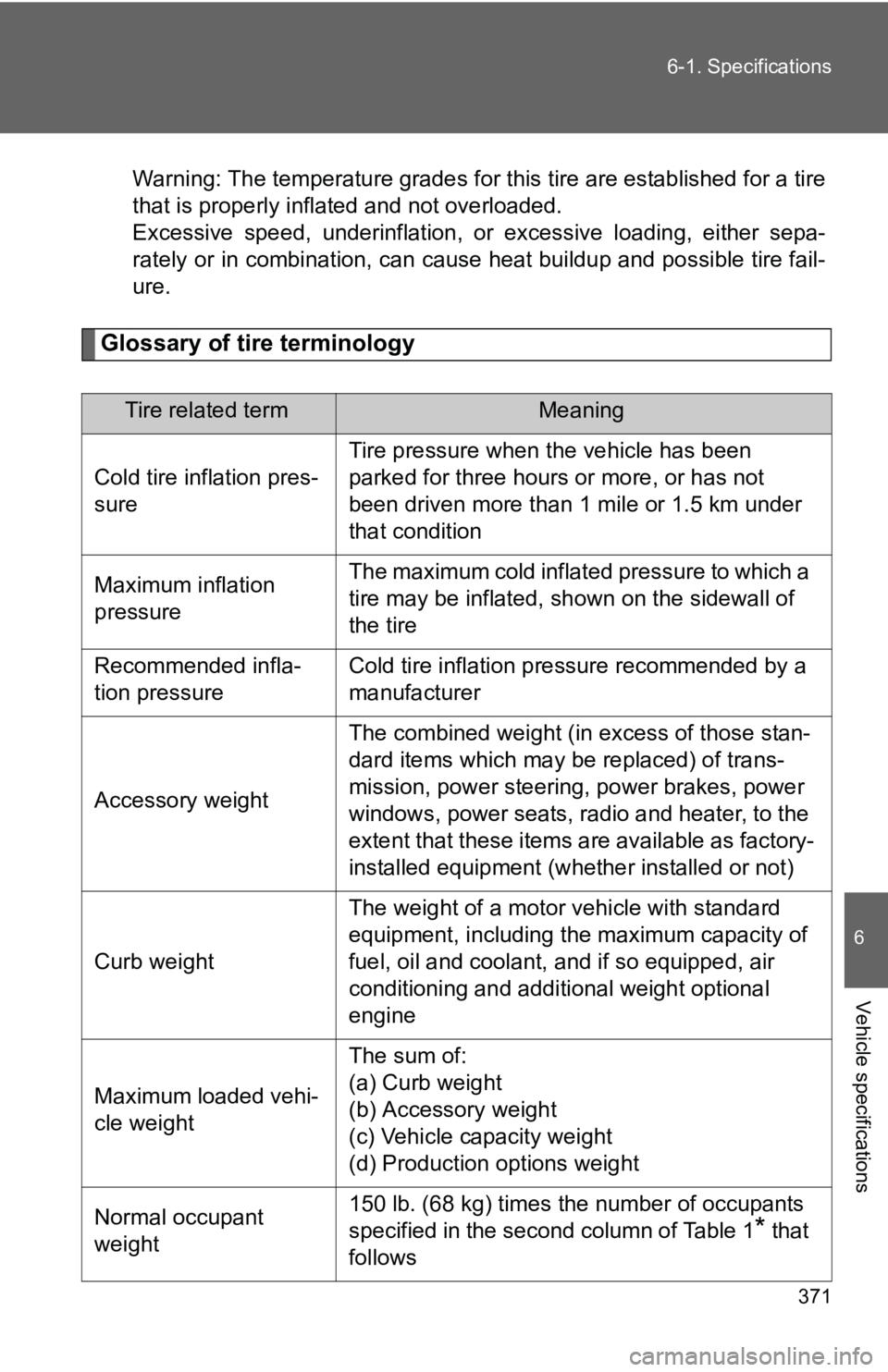2010 TOYOTA YARIS HATCHBACK oil pressure
[x] Cancel search: oil pressurePage 7 of 406

5
OVERVIEW
FEATURES/OPERATIONS
SAFETY AND EMERGENCY FEATURES
2For details, refer to “If a warning light turns on or a warning buzzer sounds,” Section
5-2, 2010 Owner’s Manual.
3For details, refer to “If your vehicle overheats,” Section 5-2, 2010 Owner’s Manual.
Low engine oil pressure warning1,2
Anti-lock Brake System warning1,2
Malfunction/Check Engine indicator1,2
Open door warning2
Low windshield washer fluid level warning2
Engine oil replacement reminder1,2
AIR BAG ON indicator
AIR BAG OFF indicator
Headlight low beam indicator
Turn signal indicator
Low fuel level warning
Headlight high beam indicator
High engine coolant temperature warning
1,2
Airbag SRS warning1,2
Electric power steering system warning1,2
Low engine coolant temperature indicator3
Front fog light indicator
Low Tire Pressure Warning1,2
Cruise control SET indicator
Cruise control indicator Slip indicator
1,2
Vehicle Stability Control OFF indicator1
Traction Control OFF indicator
Page 259 of 406

248 4-3. Do-it-yourself maintenance
CAUTION
The engine compartment contains many mechanisms and fluids that may
move suddenly, become hot, or become electrically energized. To avoid death
or serious injury observe the following precautions.
■When working on the engine compartment
●Keep hands, clothing, and tools away from the moving fan and engine
drive belt.
● Be careful not to touch the engine, radiator, exhaust manifold, etc. right
after driving as they may be hot. Oil and other fluids may also be hot.
● Do not leave anything that may burn easily, such as paper or rags, in the
engine compartment.
● Do not smoke, cause sparks or expose an open flame to fuel or the bat-
tery. Fuel and battery fumes are flammable.
● Be extremely cautious when working on the battery. It contains poisonous
and corrosive sulfuric acid.
ItemsParts and tools
Light bulbs ( →P. 294)• Bulb with same number and watt-
age rating as original
• Flathead screwdriver
Radiator and condenser (→P. 259) ⎯
Tire inflation pressure (
→P. 272) • Tire pressure gauge• Compressed air source
Washer fluid ( →P. 264)• Water
• Washer fluid containing antifreeze
(for winter use)
• Funnel (used only for adding washer fluid)
Page 326 of 406

316 5-2. Steps to take in an emergency
Stop the vehicle immediately.The following warnings indicate the possibility of damage to the vehi-
cle that may lead to an accident. Immediately stop the vehicle in a
safe place and contact your Toyota dealer.
*: The light may come on when the oil level is extremely low. It is not designed to indicate low oil level, and the oil level must be checked using the engine
oil level dipstick.
Have the vehicle inspected immediately.
Failing to investigate the cause of the following warnings may lead to
the system operating abnormally and possibly cause an accident.
Have the vehicle inspected by your Toyota dealer immediately.
Warning lightWarning light/Details
Charging system warning light Indicates a malfunction in the vehicle’s charging sys-
tem.
Low engine oil pressure warning light Indicates that the engine oil pressure is too low*.
High engine coolant temperature warning light Indicate a engine is almost overheating.( →P. 345)
Warning lightWarning light/Details
(except Canada)
(Canada) Malfunction indicator lamp
Indicates a malfunction in:
• The electronic engine control system;
• The electronic throttle control system;
• The electronic automatic transmission control sys-tem; or
• Emission control system.
Page 331 of 406

5
When trouble arises
321
5-2. Steps to take in an emergency
■If the tire pressure warning system is inoperative
The tire pressure warning system will be disabled in the following condi-
tions:
(When the condition be
comes normal, the system will work properly.)
●If tires not equipped with tire pressure warning valves and transmit-
ters are used.
●If the ID code on the tire pressure warning valves and transmitters is
not registered in the tire pressure warning computer.
●If the tire inflation pressure is 73 psi (500 kPa, 5.1 kgf/cm2 or bar) or
higher.
The tire pressure warning system may be disabled in the following condi-
tions:
(When the condition be comes normal, the system will work properly.)
●If electronic devices or facilities using similar radio wave frequencies
are nearby.
●If a radio set at similar frequencies is in use in the vehicle.
●If a window tint that affects the radio wave signals is installed.
●If there is a lot of snow or ice on the vehicle, in particular around the
wheels or wheel housings.
●If non-genuine Toyota wheels are used. (Even if you use Toyota
wheels, the tire pressu re warning system may not work properly with
some types of tires.)
●If tire chains are used.
■If the tire pressure warning light comes on after blinking for 1
minute frequently
If the tire pressure warning light comes on after blinking for 1 minute fre-
quently when the engine switch is turned to the ON position, have it
checked by your Toyota dealer.
■ After changing the engine oil (except Canada)
Make sure to reset the oil maintenance data. ( →P. 256)
Page 344 of 406

334 5-2. Steps to take in an emergency
■After completing the tire change
The tire pressure warning system must be reset ( →P. 320)
CAUTION
■Using the jack
Improper use of the jack may lead to death or serious injuries due to the
vehicle suddenly fa lling off the jack.
●Do not use the jack for any purpose ot her than replacing tires or install-
ing and removing tire chains.
●Only use the jack that comes with this vehicle for replacing a flat tire.
Do not use it on other vehicles, an d do not use other jacks for replac-
ing tires on this vehicle.
●Always check that the jack is securely set to the jack point.
●Do not put any part of your body under the vehicle supported by a jack.
●Do not start or run the engine while your vehicle is supported by the
jack.
●Do not raise the vehicle while someone is in it.
●When raising the vehicle, do not put an object on or under the jack.
●Do not raise the vehicle to a hei ght greater than that required to
replace the tire.
●Use a jack stand if it is necessary to get under the vehicle.
Take particular care when lowering the vehicle to ensure that no one
working on or near the vehicle will be injured.
■Replacing a flat tire
Observe the following precautions to reduce the risk of death or serious
injury.
●Never use oil or grease on the wheel bolts or wheel nuts.
Oil and grease may cause the wheel nuts to be excessively tightened,
leading to bolt or disc wheel damage. In addition, the oil or grease can
cause the wheel nuts to loosen and the wheel may fall off, causing a
serious accident. Remove any oil grease from the wheel bolts or wheel
nuts.
Page 367 of 406

358 6-1. Specifications
Manual transaxle
Clutch
Brakes
*1: Minimum pedal clearance when depressed with the pressure of 67.4 lbf(300 N, 31 kgf) with the engine running.
*2: Parking brake adjustment when pulled with the force of 45 lbf (200 N, 20kgf).
Gear oil capacity (Reference) 2.0 qt. (1.9 L, 1.7 Imp.qt.)
Gear oil type Gear oil API GL-4 or GL-5
Recommended gear oil
viscosity SAE 75W-90
Clutch free play
0.2 ⎯ 0.6 in. (5 ⎯ 15 mm)
Fluid type FMVSS No.116 DOT 3 or SAE J1703
Pedal clearance *1
Vehicle without the VSC
Vehicle with the VSC Without the ABS
2.8 in. (70 mm) Min.
With the ABS
2.9 in. (73 mm) Min.
3.0 in. (76 mm) Min.
Pedal free play
0.04 ⎯ 0.24 in. (1 ⎯ 6 mm)
Brake pad wear limit 0.04 in. (1.0 mm)
Brake lining wear limit 0.04 in. (1.0 mm)
Parking brake lever travel *26 — 9 clicks
Fluid typeFMVSS No. 116 DOT 3 or SAE J1703
Page 380 of 406

371
6-1. Specifications
6
Vehicle specifications
Warning: The temperature grades for this tire are established for a tire
that is properly inflated and not overloaded.
Excessive speed, underinflation, or
excessive loading, either sepa-
rately or in combination, can caus e heat buildup and possible tire fail-
ure.
Glossary of tire terminology
Tire related termMeaning
Cold tire inflation pres-
sure
Tire pressure when the vehicle has been
parked for three hours or more, or has not
been driven more than 1 mile or 1.5 km under
that condition
Maximum inflation
pressureThe maximum cold inflated pressure to which a
tire may be inflated, s hown on the sidewall of
the tire
Recommended infla-
tion pressureCold tire inflation pressure recommended by a
manufacturer
Accessory weight
The combined weight (in excess of those stan-
dard items which may be replaced) of trans-
mission, power steering, power brakes, power
windows, power seats, radio and heater, to the
extent that these items are available as factory-
installed equipment (whether installed or not)
Curb weight
The weight of a motor vehicle with standard
equipment, including the maximum capacity of
fuel, oil and coolant, and if so equipped, air
conditioning and additional weight optional
engine
Maximum loaded vehi-
cle weight
The sum of:
(a) Curb weight
(b) Accessory weight
(c) Vehicle capacity weight
(d) Production options weight
Normal occupant
weight150 lb. (68 kg) times the number of occupants
specified in the second column of Table 1
* that
follows
Page 401 of 406

395
Alphabetical index
Fog lights switch ................... 151
Hazard lights switch ............. 304
Ignition switch ....................... 129
Headlights switch ................. 149
Light switch........................... 149
Power door lock switch........... 32
Power window switch ............. 71
Turn signal lights .................. 135
VSC OFF switch ................... 162
Window lock switch ................ 72
Wiper and washer ........ 152, 155
Tachometer .............................. 139
Tail lights Indicator................................ 149
Replacing light bulbs ............ 294
Switch ................................... 149
Wattage ................................ 360
Theft deterrent system
Alarm ...................................... 80
Engine immobilizer system..... 78
Theft prevention labels ........... 82
Theft prevention labels ............. 82
Tire inflation pressure ............ 272
Tire information Glossary ............................... 371
Size ...................................... 368
Tire identification number ..... 367
Uniform tire quality grading ............................... 369
Tires
Chains .................................. 169
Checking .............................. 266
If you have a flat tire ............. 325
Identification number ............ 364
Inflation pressure .......... 272, 359
Inflation pressure sensor ...... 267
Information ........................... 364
Replacing ..................... 266, 325
Rotating tires ........................ 266
Size ...................................... 359
Snow tires............................. 169
Spare tire .............................. 325 Tire pressure warning
system ........................266, 318
Warning light .........................318
Tools .........................................325
Total load capacity...................168
Towing Dinghy towing................181, 182
Emergency towing.................305
Trailer towing.................172, 173
Trip meter .................................142
Turn signal lights Indicator ................................135
Lever .....................................135
Replacing light bulbs .............294
Switch....................................135
Wattage .................................360
Vanity mirrors...........................228
Vehicle identification number ...................................353
Vehicle stability control...........160
VSC............................................160
Warning buzzers Brake system ........................315
Seat belt reminder .................318
Warning lights
ABS .......................................316
Airbag system .......................316
Anti-lock brake system ..........316
Brake system ........................316
Charging system .... ...............316
Driver’s seat belt ...................318
Electric power steering
system ................................316
Electronic engine control
system ................................316
Engine oil replacement..........318
EPS system...........................316
Front passenger occupant classification system ...........316
Front passenger’s seat belt ...318
T
V
W